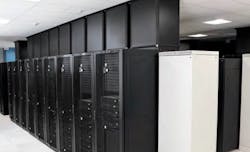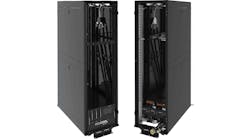New Report Explores ‘Key Steps’ for Optimizing Data Center Cooling Performance
As big data and the number of data centers continues to grow by leaps and bounds, data center cooling is being innovated regularly. In fact, it’s of utmost importance as tech leaders work to figure out how to optimize cooling performance.
Get the full report.
A new report from Chatsworth Products (CPI) explores this very topic — specifically airflow management and what it calls the “key steps” for optimizing data center cooling performance.
“Optimizing cooling performance improves capacity utilization and may allow cooling system adjustments that reduce cooling costs and OPEX,” CPI explains in the new paper.
How does it work? According to the report, in air-cooled data centers, the “key” is to understand how changes in the site impact cooling, and how airflow management can be used again — as a tool for optimization.
That said, there are limits on how much power or air can be delivered to a cabinet depending on each room design, CPI reminds the industry.
Today’s average cabinet density of 8-10 KW falls within the cooling capacity of typical airflow supplied to the cabinet, the report states.
As a result, CPI highlights it is probable many businesses have some unused or possibly wasted cooling capacity in their air-cooled data center — “especially if they do not practice a comprehensive airflow management strategy.”
The first step? Identifying causes of cooling issues, including the shape and side of the room, raised floor and ceiling heights, location of cooling units, under-floor obstructions and much more.
Step two — sealing openings, and where airflow leakage is prevalent. The report shows images that illustrate how example sites can improved by controlling airflow, with no need for additional cooling capacity or equipment.
The full report explores these topics and more steps in detail:
- Identifying Causes of Cooling Issues
- Sealing Openings
- Balancing Airflow
- Adding Containment to Isolate Hot and Cold Air
- Adjusting the Cooling System
This white paper, by Chatsworth Products (CPI) and Innovative Research Inc. (IRI), provides an overview of the key steps for optimizing the cooling performance of air-cooled data centers. This includes employing a Computational Fluid Dynamics (CFD) modeling software tool for analysis and exercising airflow management best practices that will help data center managers understand the what and how of optimizing airflow and, consequently, cooling performance.
Download the full report, “Data Center Airflow Management Basics: Key Steps for Optimizing Cooling Performance,” which delves further into the key aspects of data center cooling and airflow basics to meet your cooling goals.





